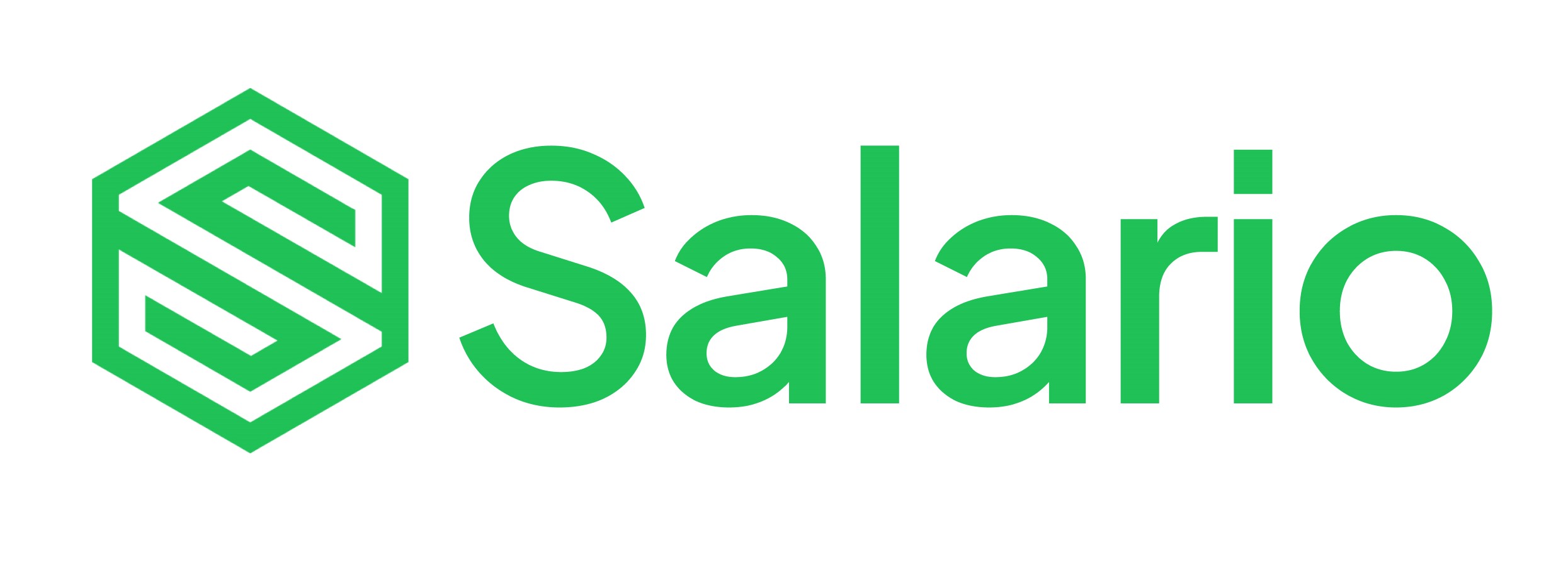
As we step into 2025, organizations are focusing on aligning their strategic objectives with a workforce-first approach. HR professionals play a pivotal role in shaping the workplace culture, managing employee relationships, and streamlining payroll operations. Setting clear, actionable HR goals ensures a seamless transition into the new year while driving employee satisfaction and organizational growth.
This article explores strategies for HR teams to prioritize payroll efficiency and foster meaningful employee relationships, ensuring a productive and engaged workforce in 2024.
The Importance of Defining HR Goals
HR goals provide a roadmap for achieving organizational success through people-centric strategies. By identifying priorities such as improving payroll processes and enhancing employee relationships, HR departments can address operational inefficiencies, reduce employee turnover, and cultivate a positive workplace environment. Goals that align with the organization’s broader mission are crucial for measurable success.
Streamlining Payroll Systems for Accuracy and Transparency
Efficient payroll management is at the core of HR operations. Errors in payroll processing can erode employee trust and damage relationships, making payroll accuracy a non-negotiable priority for 2024.

Investing in robust payroll software that automates calculations, tax compliance, and payment scheduling can significantly reduce errors. Regular audits of payroll systems ensure accuracy and adherence to local tax laws, preventing costly penalties. Furthermore, providing employees with easy access to their payroll records through self-service portals enhances transparency, reinforcing trust in HR processes.
Another critical goal is integrating payroll with other HR functions, such as benefits administration and attendance tracking. This creates a unified system that simplifies data management and reduces manual effort, allowing HR teams to focus more on strategic initiatives like building employee relationships.
Fostering Strong Employee Relationships
Employee relationships are the foundation of a thriving workplace. In 2024, HR goals should include initiatives that foster collaboration, open communication, and mutual respect among employees.
Creating an inclusive workplace culture where employees feel valued and heard is a top priority. Regular feedback sessions, employee engagement surveys, and open-door policies encourage communication and provide insights into areas for improvement. HR can also organize team-building activities to strengthen interpersonal connections and reduce workplace conflict.
Conflict resolution mechanisms should be a key component of the employee relationship strategy. By providing training to managers on mediation and communication, HR can address disputes effectively and maintain harmony within teams.
Recognition programs are another avenue to strengthen employee relationships. Publicly acknowledging employees’ achievements and contributions boosts morale and creates a culture of appreciation. As a part of HR goals for 2024, recognition should be personalized and aligned with organizational values.
Leveraging Technology to Enhance HR Goals
Technology is a powerful enabler in achieving HR goals, particularly in payroll management and relationship building. Digital tools streamline administrative tasks, freeing up time for HR teams to focus on employee engagement.
Key Technologies for 2024 HR Goals:
- Payroll Automation Tools: Platforms like Gusto, Salario, or ADP reduce manual payroll errors and enhance compliance.
- Employee Engagement Platforms: Tools like 15Five or Officevibe help HR teams measure and improve employee satisfaction.
- HR Analytics Software: Data-driven insights enable HR to track the effectiveness of employee relationship initiatives and payroll processes.
Embracing these technologies ensures that HR goals are met efficiently while allowing teams to focus on strategic areas of impact.
Setting SMART HR Goals
For 2024, HR goals should follow the SMART framework—Specific, Measurable, Achievable, Relevant, and Time-bound. Here’s an example of how HR can structure goals around payroll and employee relationships:
- Payroll Goal: Reduce payroll processing errors by 30% by Q3 2024 through the implementation of a new payroll software.
- Employee Relationship Goal: Increase employee engagement scores by 20% by December 2024 through quarterly team-building activities and recognition programs.
By setting such precise goals, HR teams can monitor progress and make necessary adjustments throughout the year.
Building Trust Through Transparent Communication
Effective communication is a cornerstone of strong employee relationships. Employees who feel informed and involved are more likely to trust HR and the organization as a whole. In 2024, HR goals should focus on improving communication channels to facilitate transparency.

Regular updates about organizational changes, payroll adjustments, or new policies should be communicated clearly and promptly. This prevents misunderstandings and builds a culture of openness. Additionally, HR can create forums or town hall meetings where employees can voice their concerns and provide feedback. Addressing these concerns demonstrates that HR values employee input in strengthening relationships.
Emphasizing Employee Well-being
Employee well-being is integral to strong relationships and a productive workforce. In 2024, HR goals should prioritize initiatives that support physical, mental, and financial well-being.
Offering wellness programs such as fitness challenges, mental health resources, or financial planning workshops demonstrates care for employees beyond their professional roles. Flexible work arrangements, like remote or hybrid work options, contribute to a better work-life balance, enhancing job satisfaction and strengthening employee relationships.
Payroll plays a significant role in financial well-being. Ensuring that salaries are paid accurately and on time is not only a legal obligation but also a way to reduce stress for employees. Payroll accuracy reinforces trust in HR and the organization, contributing to stronger relationships.
Focusing on Employee Skill Development
Another essential HR goal for 2024 is prioritizing employee skill development. As industries evolve and adopt new technologies, ensuring that employees have the skills necessary to meet these changes is critical for organizational success.
Skill development initiatives should be aligned with both the organization’s strategic objectives and employees’ personal growth aspirations. HR can design tailored training programs to address specific gaps identified through performance reviews or skills assessments. Offering a mix of in-person workshops, online learning platforms, and on-the-job training creates a dynamic and flexible learning environment.

Encouraging cross-functional training, where employees learn skills outside their primary roles, adds versatility to the workforce. For example, an employee in marketing may benefit from acquiring basic data analysis skills, enhancing their ability to interpret campaign metrics. By prioritizing skill development, HR builds a more competent workforce and strengthens employee relationships by demonstrating the organization’s commitment to their growth.
Challenges in Achieving HR Goals
While setting ambitious HR goals for 2024 is vital, implementing these goals comes with its own set of challenges. Below are five common challenges and strategies to address them effectively:
1. Budget Constraints
Limited financial resources often restrict the implementation of HR initiatives, such as upgrading payroll systems, organizing employee engagement programs, or investing in training platforms. For many organizations, balancing cost with the need to enhance employee experiences can be daunting.
To navigate budget constraints, HR teams should focus on prioritizing high-impact initiatives and leveraging cost-effective solutions. For instance, instead of expensive in-person training, organizations can adopt affordable e-learning platforms. Demonstrating the return on investment (ROI) for HR programs can also help secure additional funding from leadership.
2. Resistance to Change
Introducing new HR systems, such as an updated payroll platform or innovative employee recognition programs, often faces resistance from employees and managers alike. Change can disrupt established workflows, causing apprehension and delays.
Overcoming resistance requires clear communication about the benefits of the change and involving employees early in the process. HR can hold training sessions or workshops to familiarize staff with new tools and processes. Providing ongoing support and collecting feedback can ease the transition and foster acceptance.
3. Lack of Technological Integration
Many organizations struggle with disconnected systems for payroll, employee engagement, and performance management. A lack of integration between these platforms creates inefficiencies and makes it challenging to achieve HR goals effectively.
Investing in integrated HR solutions that connect payroll, performance, and engagement data can address this issue. While the upfront cost might be significant, the long-term benefits of streamlined processes and better data management outweigh the initial investment. Partnering with IT teams to ensure proper implementation and support can also enhance system efficiency.
4. Time Constraints
HR teams often juggle multiple responsibilities, from administrative tasks to strategic initiatives. Limited time can hinder their ability to focus on long-term goals, such as improving payroll systems or enhancing employee relationships.
To address this challenge, HR departments should consider delegating administrative tasks to technology or outsourcing partners. Automating routine processes, such as payroll calculations and compliance reporting, can free up valuable time for strategic planning. Prioritizing tasks and setting realistic timelines for each HR goal also helps in managing workloads effectively.
5. Measuring Success
Determining the effectiveness of HR goals, particularly those related to employee relationships, can be complex. Metrics such as employee satisfaction or engagement levels are subjective and may not directly correlate with tangible outcomes.
HR teams should develop clear, measurable KPIs (Key Performance Indicators) for each goal. For example, tracking payroll accuracy rates, employee turnover, or participation in engagement programs provides quantifiable insights into progress. Regularly reviewing these metrics and adjusting strategies ensures continuous improvement and alignment with organizational objectives.
Conclusion: Achieving HR Goals in 2025
Prioritizing payroll accuracy and fostering employee relationships are essential components of HR goals for 2024. By streamlining payroll systems, leveraging technology, and building a culture of transparency and inclusion, HR teams can drive organizational success.
The journey to achieving these goals requires commitment, collaboration, and adaptability. By focusing on employees’ well-being and satisfaction, HR departments can create a workplace where individuals thrive, and the organization prospers.
Start planning your HR goals today and make 2025 a transformative year for your workforce.
